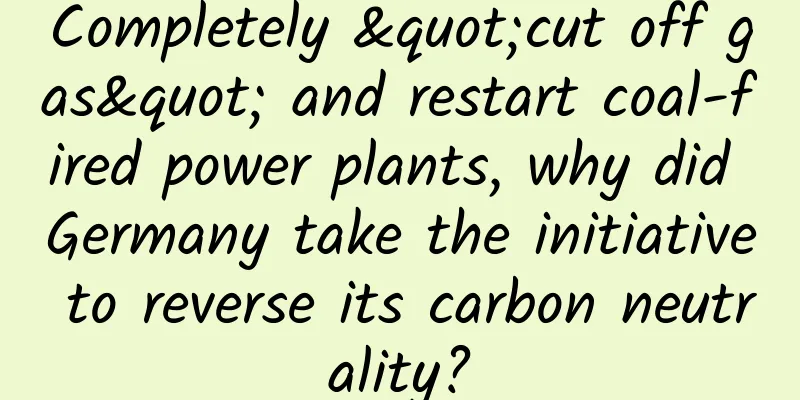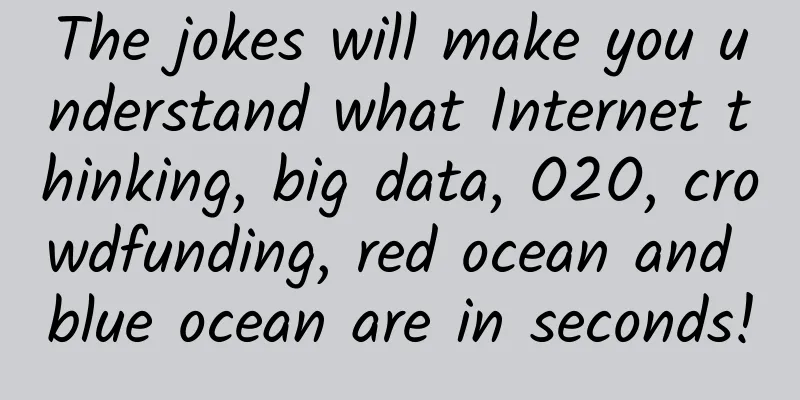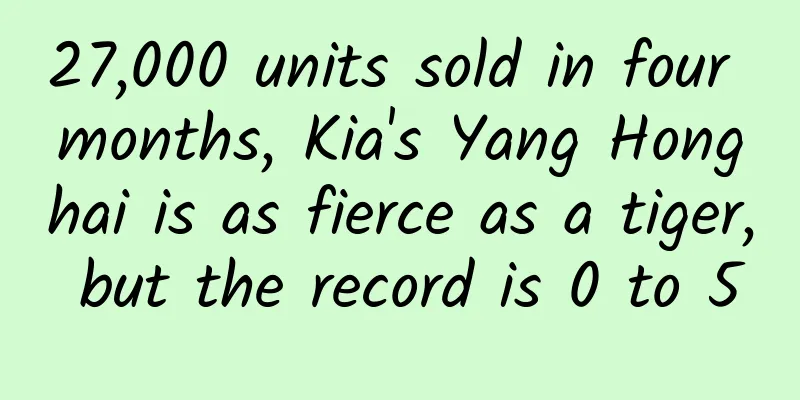Completely "cut off gas" and restart coal-fired power plants, why did Germany take the initiative to reverse its carbon neutrality?

|
"Environmental girl" Greta may be angry again because Germany's carbon neutrality process has actually taken the initiative to reverse history. As a former top student in the global energy transition, Germany is ahead of other countries in the world in the process of carbon neutrality. As early as 1990, Germany reached its carbon peak. Last May, former German Chancellor Angela Merkel announced at the opening ceremony of the Petersburg Climate Dialogue that Germany would achieve carbon neutrality five years earlier, from 2050 to 2045. This decision, which demonstrated its determination and courage, also won praise for Germany at the time. However, just one year later, Germany, which was once full of vigor and vitality, has begun to reverse history in its current carbon neutrality practice. Not long ago, the German Bundestag reviewed and approved several energy sub-bills submitted by the German government. Although the German government reiterated its commitment to achieve carbon neutrality by 2045 in the bill, the package of bills also made many adjustments to carbon neutrality. Among them, the disagreement between the Bundestag and the German government on whether to achieve the goal of 100% renewable electricity by 2035 attracted the most attention. The German government believes that ideally the country will be able to completely phase out coal by 2030, so the goal of achieving 100% renewable electricity by 2035 is feasible. However, the Bundestag believes that the government's goal is not feasible considering the current situation. Therefore, the Bundestag revised the government's goal to 80% of electricity from renewable energy by 2035. Influenced by this target adjustment, Germany has also delayed the time for phasing out coal to 2038 and decided to restart domestic coal-fired power plants until the end of March 2024. Although restarting coal-fired power can help Germany get out of its current predicament, this move also goes against the ambitious goals it had set in the carbon neutrality process. At the same time, environmental protection is not only a social topic in Germany, but also a political issue. After the 2021 election, Germany formed a "traffic light" cabinet headed by the Social Democratic Party. The "green" refers to the pursuit of ecological sustainability. It is understood that German environmentalists have previously protested against the government's delay in shutting down coal and nuclear power plants. Now Germany's reversal will undoubtedly still cause an uproar. Since these adjustments in Germany are contrary to the concept of carbon neutrality and will be protested by environmentalists, why does the German government still insist on going its own way? Judging from Germany's current situation, the "gas panic" in Europe caused by the Russia-Ukraine conflict is the fundamental reason that pushed Germany to restart coal-fired power. Data shows that about 25% of Germany's oil and 40% of its natural gas come from Russia. Although Germany's current electricity sources are mainly clean energy such as wind power, natural gas power generation still accounts for as high as 12.2% of its power structure. As Germany took the initiative to announce the "gas cut" and no longer accept natural gas from Russia, Germany's electricity supply began to have a gap. In the face of the power shortage caused by the "gas outage", it is most appropriate to use natural gas to make up for it. After all, natural gas will not affect the country's carbon neutrality process. However, Russia's "gas outage" strangles not only Germany's throat, but also the throat of Western Europe. After Russia's "gas outage", Western European countries including Germany began to rush to buy natural gas. Coupled with the force majeure of inflation and poor sea transportation, European natural gas prices also rose sharply. In March this year, European natural gas prices once set a new record, reaching $2,200 per thousand cubic meters. Since then, with the easing of the epidemic and the increase in production capacity of natural gas exporting countries, European natural gas prices have fallen back. However, with the arrival of summer, European natural gas prices have risen again. In early July, European natural gas prices broke through the $1,900 per thousand cubic meters mark. In contrast, although the international coal price has continued to rise since the beginning of the year, the former is still lower than natural gas. In June this year, the price of thermal coal in the European market was $420/ton. Market analysts believe that only when the EU carbon price rises to 105 euros/ton will it be more cost-effective to use natural gas to fill the gap than to use coal. However, as of July 1, the EU's benchmark carbon price was only 85.44 euros/ton, far below the reversal point given by market analysts. It can be seen that although Germany has to pay a carbon emission fee to use coal to make up for the power gap caused by the shortage of natural gas, it is a good deal from the perspective of power generation cost and emergency response. This also explains why Germany is determined to restart coal-fired power plants. In addition, the conflict between Russia and Ukraine has not shown any signs of easing. For German politicians who firmly support Ukraine, delaying the elimination of coal is undoubtedly a backup plan based on the changing situation. Careful friends may ask, since clean energy such as wind power has become the backbone of Germany's power system, why doesn't the government hand over the burden of making up for the gap in natural gas power generation to clean energy? In fact, Germany did not hand over this heavy burden to clean energy because of two considerations. On the one hand, although Germany is actively promoting the elimination of coal-fired power and nuclear power, coal-fired power still occupies an important position in Germany's energy structure. Data shows that in 2020, lignite and anthracite accounted for 16.9% and 7.4% of Germany's power structure respectively. At the same time, the growth rate of clean energy installed capacity in Germany has also slowed down in recent years. Taking onshore wind power as an example, Germany's new onshore wind power installed capacity has ushered in low growth from 2018 to 2021. In the past four years, Germany's new onshore wind power installed capacity was 2.4GW, 700MW, 1GW and 1.93GW respectively, which is a serious drop compared to the new installed capacity of 5.3GW in 2017. On the other hand, although clean energy such as wind power and photovoltaics have become the backbone of Germany's power structure, their power generation is unstable. In the first half of 2021, Germany's wind power generation fell sharply by 21% year-on-year due to poor wind conditions in spring, hitting the lowest level in the same period since 2018. Therefore, it is not reliable to expect clean energy to generate more and more power to make up for the gap in natural gas power generation. At the same time, due to the slowdown in the installation of clean energy in Germany in recent years, even if the construction of clean energy is stepped up now, it cannot immediately solve the current power shortage. At present, Western European countries including Germany are suffering from heat waves. Faced with high temperatures, German people naturally hope to have uninterrupted air conditioning. Based on the above considerations, restarting coal-fired power plants is undoubtedly the most effective solution. Although the German government decided to restart coal-fired power plants and postpone the phase-out of coal, it has not given up its commitment to carbon neutrality by 2045. In order to offset the increased carbon emissions from restarting coal-fired power plants and achieve the goal of carbon neutrality as scheduled. Germany has also proposed a new energy installed capacity target of doubling onshore wind power, offshore wind power and photovoltaic installed capacity by 2030 compared to last year. Specifically, in 2030, Germany's onshore wind power installed capacity will reach 115GW, offshore wind power installed capacity will reach 30GW, and photovoltaic installed capacity will reach 215GW. Among them, onshore wind power and photovoltaics will become the two major areas of development in Germany. From a bird's eye view, the radical installation target proposed by Germany now is undoubtedly full of the meaning of mending the fold after the sheep have been lost. If Germany had not relaxed the pace of installing new energy in the past few years, would Germany, which is facing the "gas outage" crisis, have to go back? It is worth pondering that Ding Zhongli, an academician of the Chinese Academy of Sciences, once said that Europe, which calls for radical emission reductions, will definitely be slapped in the face. Now Germany's actions have undoubtedly confirmed his judgment. Compared with Germany's recent clean energy installation performance, which has been full of slogans but perfunctory in action, my country's clean energy installation work is a different picture. Taking onshore wind power as an example, from 2018 to 2021, my country's new onshore wind power installed capacity was 19GW, 26GW, 54GW and 30GW respectively. Compared with Germany's carbon neutrality work in recent years, my country's carbon neutrality work is undoubtedly more convincing. There is a Chinese saying that we should listen to what they say and watch what they do. Although Germany has announced a radical clean energy installation plan, whether it will reverse history again still depends on its actions. search copy As a winner of Toutiao's Qingyun Plan and Baijiahao's Bai+ Plan, the 2019 Baidu Digital Author of the Year, the Baijiahao's Most Popular Author in the Technology Field, the 2019 Sogou Technology and Culture Author, and the 2021 Baijiahao Quarterly Influential Creator, he has won many awards, including the 2013 Sohu Best Industry Media Person, the 2015 China New Media Entrepreneurship Competition Beijing Third Place, the 2015 Guangmang Experience Award, the 2015 China New Media Entrepreneurship Competition Finals Third Place, and the 2018 Baidu Dynamic Annual Powerful Celebrity. |
<<: Memory: Android’s eternal pain!
>>: Can Apple Watch use the same charger as iPad?
Recommend
3 questions to ask in the early stages of product operation
The core goal in the initial stage of operation i...
Don’t know how to spend your money? Let’s first figure out the KPI of APP promotion?
Many game or app companies are considering how an...
Font size is bigger and clearer! WeChat: Nearly 4.07 million users have activated caring mode
[[427576]] News on October 8, today, WeChat offic...
Continental builds wireless charging terminal for Mercedes-Benz, eliminating clutter in one go
Recently, Continental announced that it has devel...
“The Domineering President” Contracts the Forest: What is the weapon of the biggest orange cat?
Tiger! Tiger! In the dark forest The bright flame...
Can't drink boiled water or overnight water? I finally understand after reading this...
All along “Drink 8 glasses of water every day” It...
Can alarm clocks also threaten our health? Multiple alarm clocks make people fall into a "sleep swamp"
China Science and Technology News Network, Februa...
Activity analysis: 10 yuan storm activity analysis and tips sharing
China Merchants Bank’s Palm Storm was first launc...
How to promote user sharing and dissemination?
For internet dogs, it is easy to organize an even...
Actually, we are all stars.
© CC BY 4.0 Leviathan Press: I forgot where I saw...
Apple's decline
"Is there any signal?" two Apple users ...
The popular energy drink is actually "poison"? How dangerous is radium water?
On the morning of March 31, 1932, Eben M. Byers d...
Yaya is back home, Beijing Zoo’s giant panda “family portrait” updated!
In the relevant departments and Beijing and Shang...
Correct understanding of nose bleeding
In winter, the heating in our north makes the ind...
Zhihu Good Things Side Job Course, Ordinary People Can Also Earn Over 10,000 Yuan Per Month From Side Jobs
Dongguan Feng Chao's blog recommends the onli...









